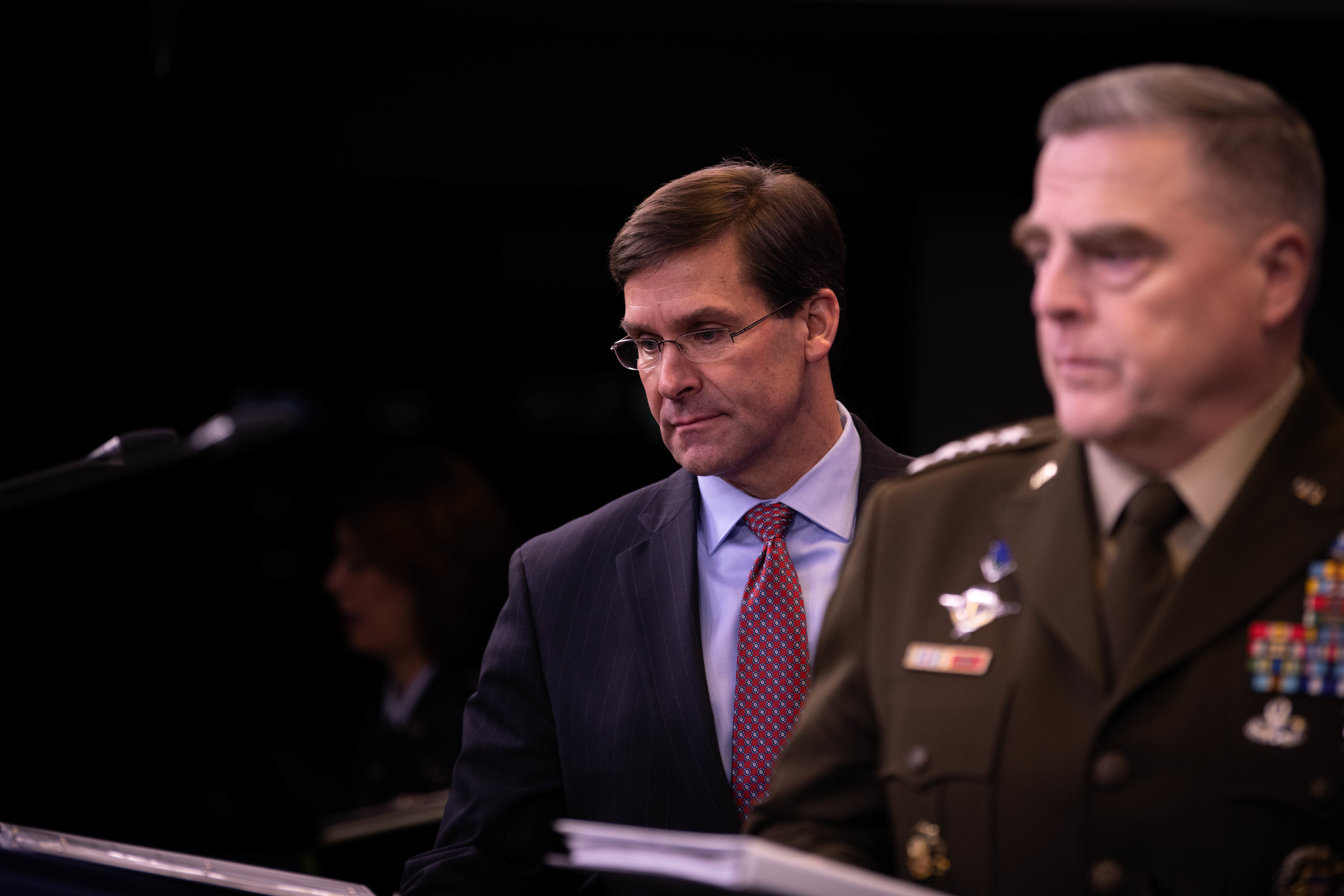
Defense Secretary Mark Esper and Chairman of the Joint Chiefs Gen. Mark Milley brief the media at the Pentagon, Dec. 20, 2019.
WASHINGTON: Pentagon leaders aren’t seeing the kind of budget growth they were looking for in the upcoming 2021 request, and aren’t sure what kind of budget they’ll be looking at in the future, either.
“In the years ahead, we need to get back to 3 to 5 percent real growth annually,” Defense Secretary Mark Esper said Thursday during an event in Washington, but wouldn’t say when that might happen. This year’s budget, an increase of about $2 billion to $740 falls far short of that.
For the immediate future, Esper said, “we have to brace ourselves that at best, defense spending will be level.”
Asked about trade-offs the Pentagon will have to make to meet the modernization goals of the services while trying to build new programs like the Navy’s new class of frigates, missile defense systems, the Space Force, and hypersonic weapons, Esper remained vague: “There are a lot of challenges and we need to meet them all, we need to push hard and have a clear vision.”
Pentagon officials outlined some of the changes coming next year to reporters on Wednesday. They outlined a plan they’re pitching Congress to move $5.7 billion away from underperforming or outdated weapons systems and offices to some of those new technology efforts.
“There’ll be contracts terminated. There’ll be less level of effort in certain areas, but I don’t think there’ll be any involuntary” separations or layoffs, one official said.
These changes are meant to fund a modernization program aimed at staying ahead of China and Russia in what is a burgeoning arms race in all but name.
“The Chinese have used at least the last 18 years while we were in Iraq and Afghanistan to make enormous strides with regard to the professionalization of their force, modernizing their doctrine, building new capabilities, going after us asymmetrically,” Esper said.
Critically, China is churning out new Type 055 destroyers at a fast clip, has started construction on its third aircraft carrier and is fielding new generations of medium and long-range ballistic missiles that hold US and allied bases in their range.
With a flat budget and Pentagon officials racing to make cuts on the back-end in order to push money toward modernization, Esper and his staff have been laying the groundwork for what will likely be some heated battles over military modernization and scrapping legacy systems.
The Navy and Air Force have already floated plans to cut older aircraft and ships in early budget back and forth debates with the White House, a slate of early retirements that will infuriate Congress, but might be the only option in order to get new planes and ships into the force.
The internal squabbles bled into the open last month when Navy, Army, and Air Force officials all said they’re not receiving their fair share of the budgetary pie.
Lithuania, Rheinmetall sign agreement for 155mm ammunition plant
“The establishment of the … ammunition factory in Lithuania will reduce our dependence on long supply chains, which currently pose great challenges in meeting the needs of the armies throughout the European Union and the world,” said Laurynas Kasčiūnas, Lithuania’s Minister of National Defense.


























